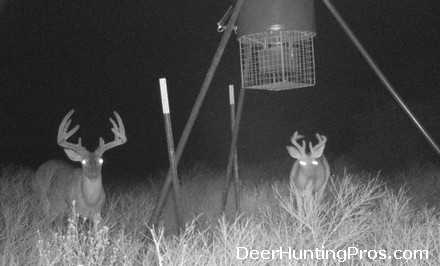Question: “We have enjoyed deer hunting in north-central for almost two decades. However, some landowners believe that deer die offs last year lowered the deer population. We waited to see what our surveys would show. Over the weekend, we all met at the deer lease to check out our game cameras. The number of photos we got over the two weeks they were out were similar as previous years, but the numbers have changed. Hard to tell from pictures what the density may be, so not sure about the die off.
What we have noticed is that the deer number seems to be the same from the number of photos, but the buck to doe ratio has flipped flopped. Last year was about 60 percent bucks and 40 percent does. This year it’s 40 percent bucks to 60 percent does. This got us thinking that some of the bucks in our area did die-off? This would explain the change in the deer herd composition we witness on our cameras.
One of the landowners said that the local biologist said their would be a big buck die off this season. The reasoning behind this thought was that the area did not get enough rain to allow the bucks to fatten up for the rut and the winter months. Have you heard of this, especially since everywhere has suffered from the dry conditions?

Deer Hunting Pros: It’s not uncommon for deer die-offs during years of low rainfall and poor habitat conditions. Deer hunting can take a hit for several years because of the loss of deer numbers. It has been my experience that during years of poor range conditions that does and fawns suffer most during late summer and early fall. Bucks can hang in fairly well through the summer and early fall because they typically are not doing a whole lot of growing or raising another animal.
Bucks, however, suffer big time in late winter if habitat conditions and/or food sources do not improve. This is because the bucks will be run down after the rut. Bucks do not stop breeding regardless of their body condition. If there is a hot doe in the area and a breath of life in any buck, he will be after her. Therefore, bucks will run and run without eating or drinking and eventually run themselves to death. This is called exertional myopathy.
This is why deer hunting during the rut is a must for serious hunters. Bucks just go and go. And they make themselves visible. They will not stop until their work is done.
During an early year (late winter) die off it is usually fawns and bucks that get it. If the home range is in poor condition, the deer that live there will be in poor condition unless there is some form of supplemental feeding. Whitetail deer will not travel to areas of better food. They simply stay within their home range and either make it or not. But these die offs are not typically specific to just bucks or just fawns. Usually these groups get it the worst but does will also be impacted.
Other factors that could have contributed to a deer die off in your part of Texas is deer disease or the fact that bucks dominated feeders. Many areas lose deer during hot, dry summers to blue tongue or EHD. This disease is spread by biting flies, which means bucks are susceptible during summer months because they are found in bachelor groups at this time of year. This likely was not what suppressed deer numbers in your area since you saw lot of bucks just before and during the deer hunting season.
We suspect that you saw more bucks last year because the bucks were dominating your feeders. When habitat conditions are poor the bigger-bodied bucks tend to get the feed that flows from feeders. This is not uncommon at all. Now that the habitat has improved, older bucks prefer to stay away from things, such as feeders, that make them more vulnerable. You may have lost some bucks, but my guess is that you never had as many as it appeared last year.